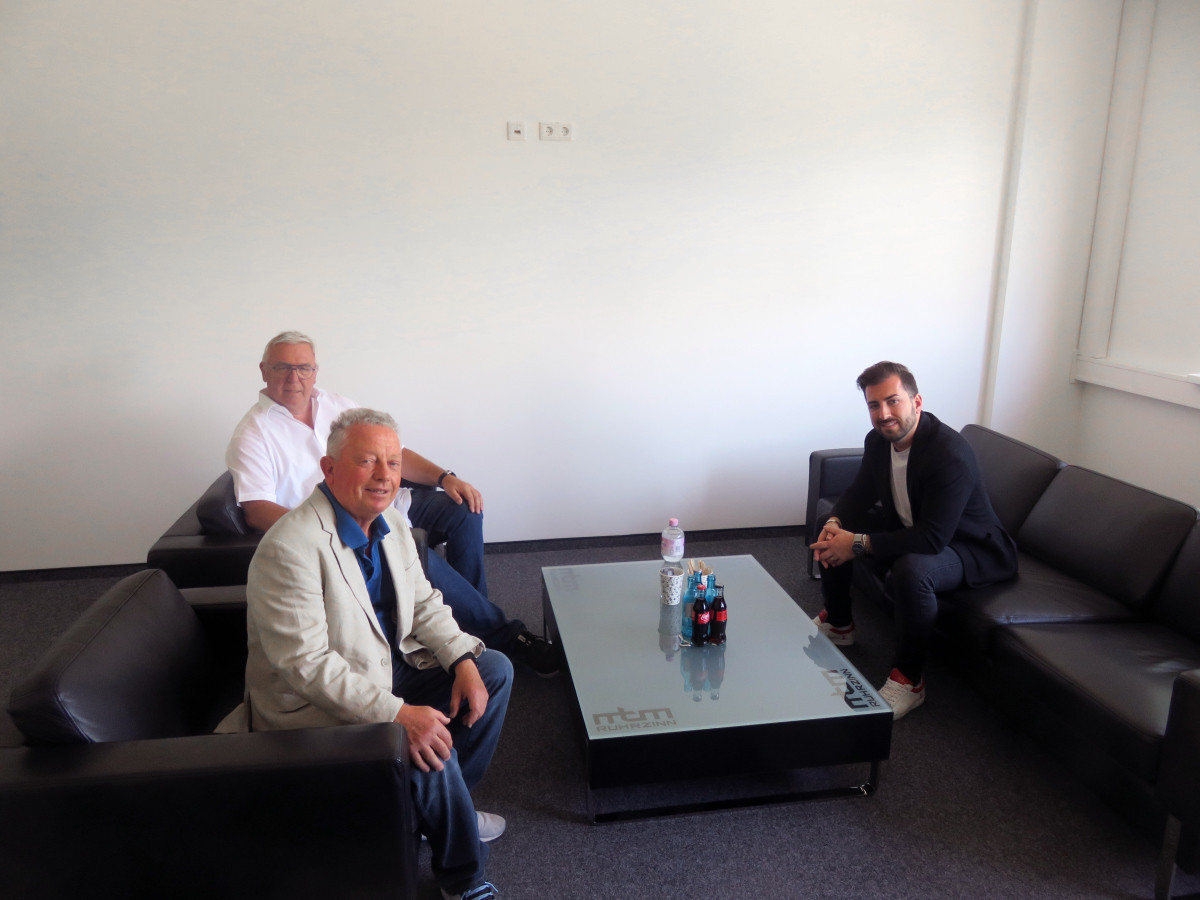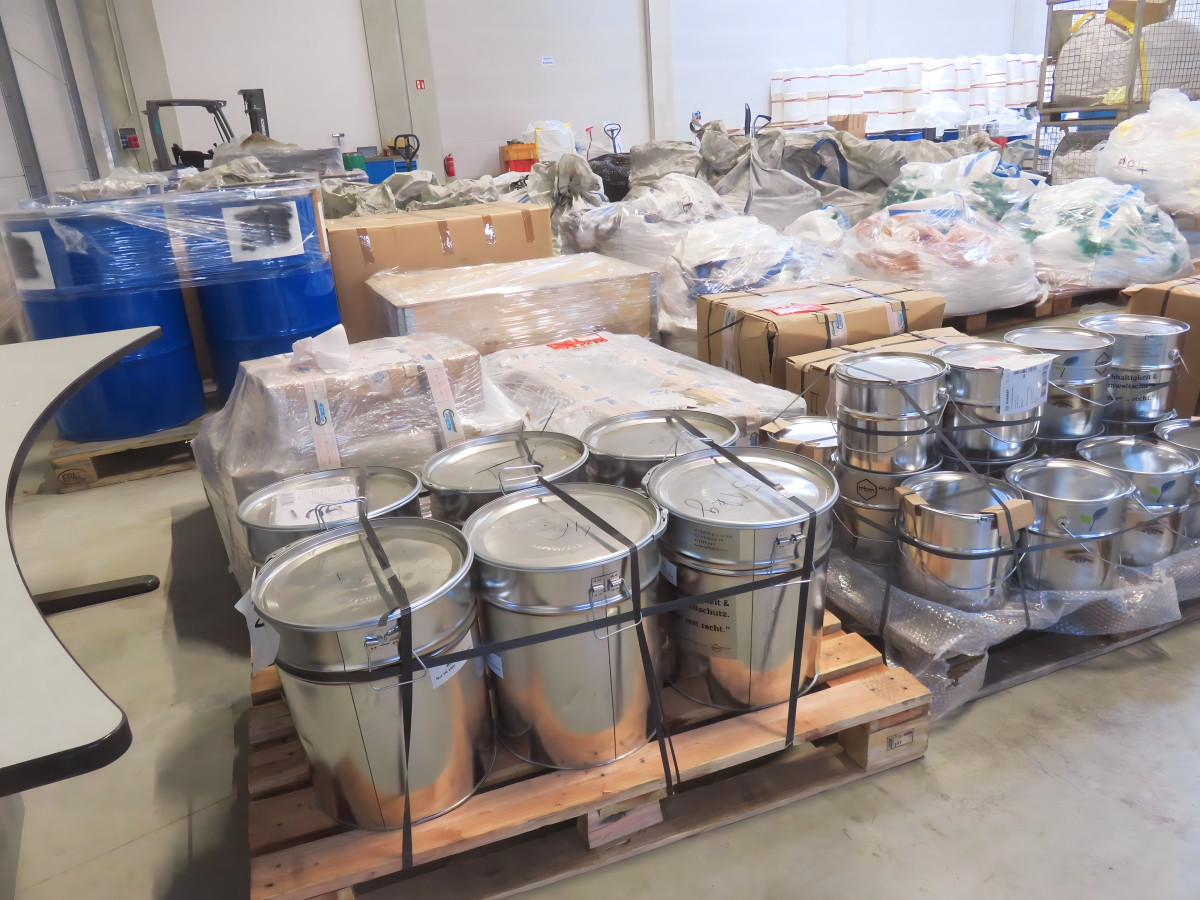MTM Ruhrzinn has had a new address since 01.04.2023. Gustl Keller from the PLUS editorial team gladly accepted the invitation to 'Visit us at our new location' and took the opportunity to talk to us about the company's development.
MTM Ruhrzinn was founded by Dan Mutschler in Lünen in 2014 as an environmental service provider. He is the sole shareholder and managing director of the company. The company has rapidly developed and specialized. The company is a provider for the recycling of solder and other metal-containing waste from electronics production.
In addition to a complex range of services relating to the recycling of tin and precious metals, the service includes sound advice on waste management and training for waste managers. Customers are offered legally compliant and, above all, sustainable recovery and recycling solutions, including a 'Secondary First Sustainability Certificate', which shows theCO2 savings from the recycled soldering tin waste. And each is individually tailored to their interests. The growing company now has over 20 employees and processes around 400 tons of tin waste annually from over 350 customers in electronics production. MTM Ruhrzinn is EfbV and ISO 9001 certified as a specialist waste management company.
The Secondary First initiative was launched for a sustainable secondary raw materials economy. As part of this initiative, companies in the electronics industry are committed to developing sustainable solutions in the areas of production and waste management and integrating them into industrial and manual processes.
 At the meeting with Dan Mutschler and Lothar Pietrzak
At the meeting with Dan Mutschler and Lothar Pietrzak
Comprehensive waste management is offered as a service for waste from electronics production, including: Waste solder, skim tin, tin dross, tin oxides, ash from the solder recovery plant, tape waste, copper pins, contact pins, plated contacts, chips, plugs and connectors. The service includes a smooth process with:
- Provision of the necessary containers for proper storage and transportation
- Collection in accordance with the provisions of waste shipment law, including transport insurance
- Material sampling and analysis by expert laboratory personnel
- Evaluation of the waste and determination of the most efficient recycling route
- Recycling via a global network of recycling companies
- Documentation from incoming goods confirmations and material analyses to recycling certificates andCO2 certificates
- Identification ofCO2 savings through a certified PCF (Product Carbon Footprint)
- Fair compensation for recycled or reused materials.
This ensures that waste is recycled in a sustainable, environmentally friendly and legally compliant manner.
Raw material cycle as small as possible - waste is a better source of raw materials
The company generally focuses on sustainability. The circular economy is particularly important here. After all, today's waste is tomorrow's raw material. The aim is to keep the raw material cycle as small as possible and to give preference to secondary raw materials. In this way, energy requirements and the associatedCO2 emissions can be significantly reduced. For example, only just under 1% of the energy is required for the secondary tin obtained through recycling compared to the primary tin obtained from ore, and less than 1% ofCO2 is emitted. In addition, MTM Ruhrzinn has developed a new chemical separation process for solder paste (residues) without burning organics, which can be used to obtain the solder powder as such. By preserving the transformation of the solder into powder form, the raw material cycle is further reduced, which is associated with a furtherreduction in CO2 and energy savings.
 Warehouse with containers of waste from electronics production
Warehouse with containers of waste from electronics production
Product carbon footprint according to standard -CO2 calculator
 Temporarily stored containers with solder paste residuesThe'DIN EN ISO 14067-2019-02 Greenhouse gases - Carbon footprint of products - Requirements and guidelines for quantification' is the standard for the development of the product carbon footprint (CO2 footprint at product level) and serves MTM Ruhrzinn as a basis. The calculation of the PCF includes transportation steps both to the company and from there to the refineries that process the material. Packaging, production waste, material residues and process inputs are taken into account. The data set is therefore more in-depth than many others in the electronics industry. Greenhouse gas emissions caused by the extraction and processing of primary tin, copper, lead, silver and gold are used as the basis for calculation. These are compared with the emissions from the recycling processes of the GmbH and a 'savings margin' is calculated.
Temporarily stored containers with solder paste residuesThe'DIN EN ISO 14067-2019-02 Greenhouse gases - Carbon footprint of products - Requirements and guidelines for quantification' is the standard for the development of the product carbon footprint (CO2 footprint at product level) and serves MTM Ruhrzinn as a basis. The calculation of the PCF includes transportation steps both to the company and from there to the refineries that process the material. Packaging, production waste, material residues and process inputs are taken into account. The data set is therefore more in-depth than many others in the electronics industry. Greenhouse gas emissions caused by the extraction and processing of primary tin, copper, lead, silver and gold are used as the basis for calculation. These are compared with the emissions from the recycling processes of the GmbH and a 'savings margin' is calculated.
You can calculate how muchCO2 can be saved by recycling tin and precious metal-containing waste compared to the primary source yourself using theCO2 calculator for your waste on the website.
BSA - Sustainable, lead-free soldering 4.0
The low-melting solder BSA offers a cost-effective solution for wave and selective soldering. It is a lead-free electronic solder based on bismuth with the addition of silver. BSA fulfills all technical requirements and has the following advantages:
- over 15 times larger process window compared to conventional solders with melting points in the range 218 °C-228 °C
- hardly any copper leaching
- above-average wetting behavior and excellent soldering properties
- lowest possible temperature stress for electronic products due to the melting point of 138 °C
- up to 50 % less tin oxide (dross)
- considerable savings due to less maintenance and servicing work on the systems
- up to 40% energy savings andCO2 reduction for the wave soldering process
- up to 50 % increase in productivity in the soldering process, especially for complex electronic assemblies with high layers
Compared to SnCuNi and SAC solders, the BSA low-melting solder is not only more cost-effective. Significant energy savings have also been achieved.
New location
The new headquarters of MTM Ruhrzinn is located at Lüschershofstraße 73 in Essen. The DGNB Gold-certified location achieves an optimized eco-balance and a lowCO2 footprint through the use of special building materials and sustainable technologies. The new premises also offer sufficient space for further growth.



